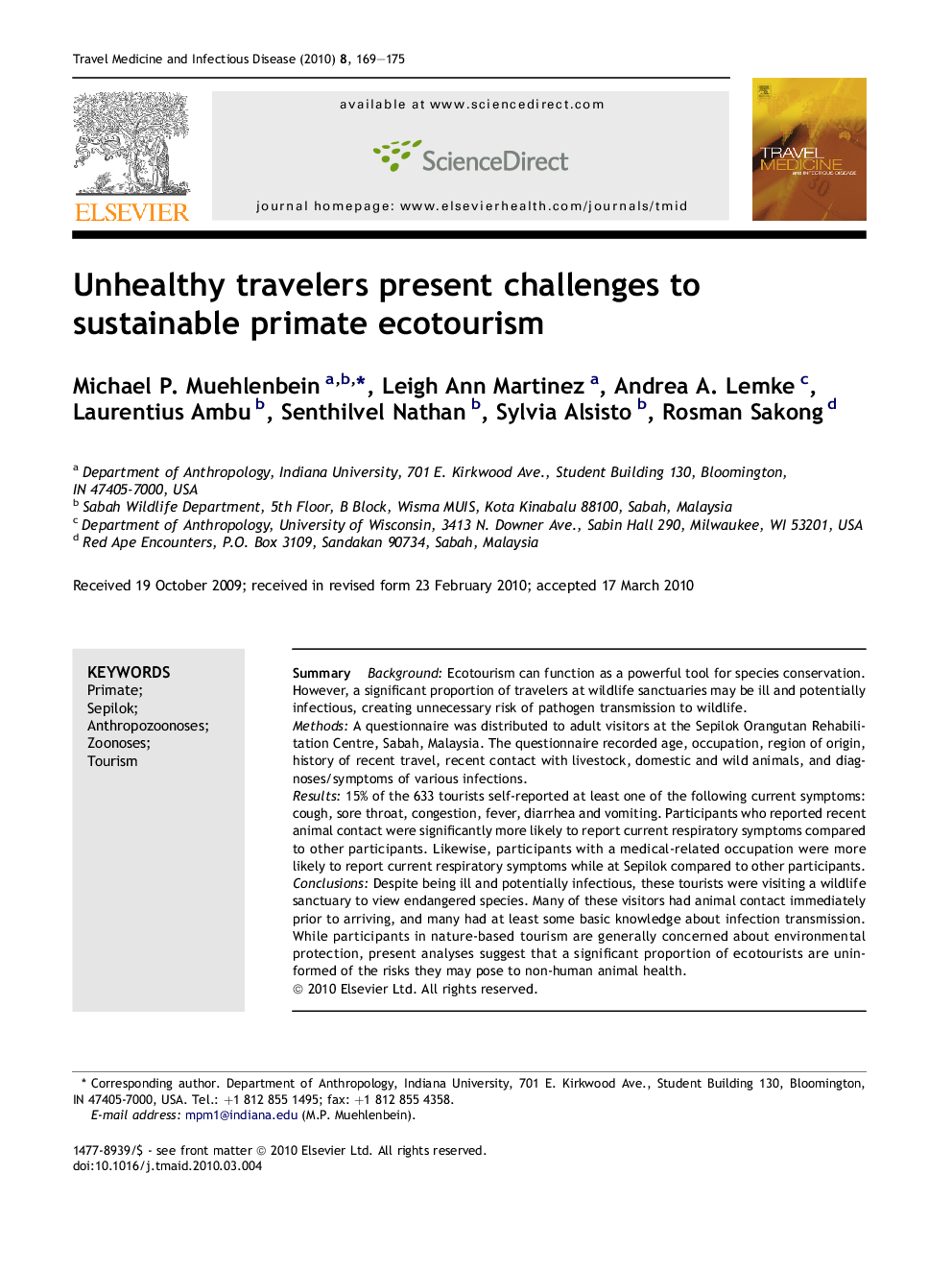| Article ID | Journal | Published Year | Pages | File Type |
|---|---|---|---|---|
| 3393307 | Travel Medicine and Infectious Disease | 2010 | 7 Pages |
SummaryBackgroundEcotourism can function as a powerful tool for species conservation. However, a significant proportion of travelers at wildlife sanctuaries may be ill and potentially infectious, creating unnecessary risk of pathogen transmission to wildlife.MethodsA questionnaire was distributed to adult visitors at the Sepilok Orangutan Rehabilitation Centre, Sabah, Malaysia. The questionnaire recorded age, occupation, region of origin, history of recent travel, recent contact with livestock, domestic and wild animals, and diagnoses/symptoms of various infections.Results15% of the 633 tourists self-reported at least one of the following current symptoms: cough, sore throat, congestion, fever, diarrhea and vomiting. Participants who reported recent animal contact were significantly more likely to report current respiratory symptoms compared to other participants. Likewise, participants with a medical-related occupation were more likely to report current respiratory symptoms while at Sepilok compared to other participants.ConclusionsDespite being ill and potentially infectious, these tourists were visiting a wildlife sanctuary to view endangered species. Many of these visitors had animal contact immediately prior to arriving, and many had at least some basic knowledge about infection transmission. While participants in nature-based tourism are generally concerned about environmental protection, present analyses suggest that a significant proportion of ecotourists are uninformed of the risks they may pose to non-human animal health.
